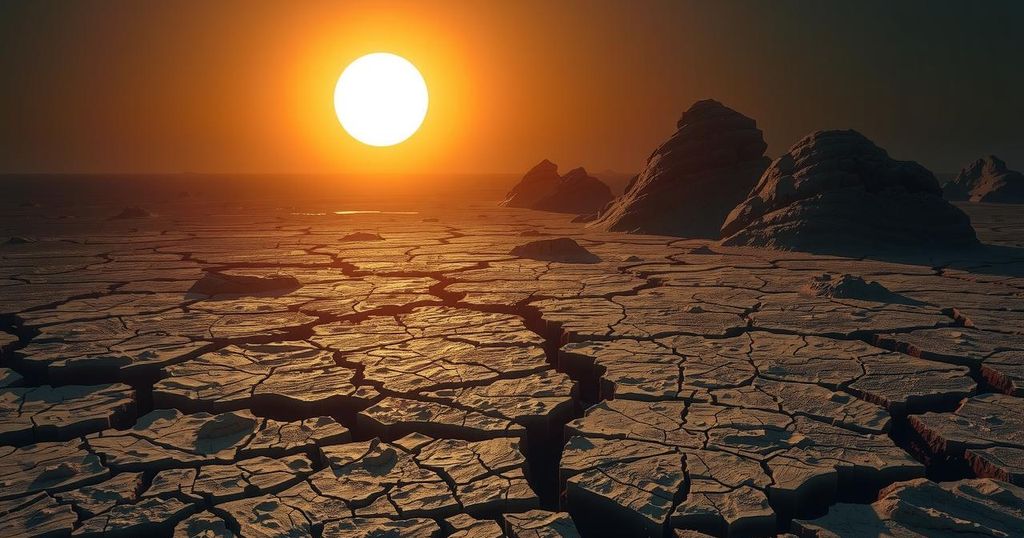January 2025 has recorded the hottest January globally, with temperatures 1.75°C above pre-industrial averages. Despite the emergence of La Niña, global temperatures continue to rise, heightening concerns over climate change acceleration. Europe experienced its second-hottest January ever. Experts warn that persistent high temperatures signal an urgent need for effective climate action.
January 2025 has been recorded as the hottest January globally, registering a surface air temperature of 13.23°C, which is 1.75°C above pre-industrial averages. This unexpected rise in temperature occurs as the La Niña phenomenon, known for its potential cooling effects on global warming, emerged in December but failed to contain the escalation of heat. This development raises significant concerns about the accelerating impact of climate change. European countries, despite experiencing cooler weather in several regions, reported their second-hottest January ever.
Copernicus Climate Change Service, the EU’s Earth observation agency, highlighted the alarming trends of climate change and the persistent rise in emissions, especially as leading polluters like the United States retract their commitments. Bill McGuire, a geophysical and climate hazards professor at UCL, described the situation as “astonishing and frankly terrifying,” correlating it with extreme weather incidents like floods and wildfires. Samantha Burgess, from the European Centre for Medium-Range Weather Forecasts, remarked that January continues the streak of record temperatures seen over the past two years.
Furthermore, the average global sea surface temperature reached 20.78°C, marking the second-highest figure for January on record. Although there were some cooler conditions in the central equatorial Pacific due to La Niña, many ocean basins still showed unusually high temperatures, primarily attributed to human activities. The anomaly of high global temperatures amidst a La Niña event prompts scientists to consider both natural weather fluctuations and ongoing anthropogenic climate influence. Richard Allan from the University of Reading attributed warm sea surface temperatures to climatic factors but maintained that weather variations can create temporary colder conditions on land.
James Hansen, an early advocate for climate action, affirmed that 2025 may reflect similarly high temperatures as 2024 despite the cool phase of La Niña. The past year recorded the hottest average temperatures globally, at 1.5°C above pre-industrial levels, emphasizing the ongoing climate crisis and the urgent need for effective mitigation strategies to address rising temperatures and related extreme weather.
In light of the latest climate data, January 2025 has emerged as a historic month, showcasing unprecedented heat levels—a concerning trend in the context of climate change. La Niña, a natural climate phenomenon, was anticipated to moderate global temperatures; however, the opposite has occurred, intensifying fears regarding climate acceleration. These patterns signal the pressing urgency for global action against climate change as emissions continue to rise, despite the knowledge and science supporting climate mitigation. Numerous climate scientists have voiced their concerns and linked climate change to extreme weather incidents, highlighting the need for adherence to environmental commitments to reverse these trends.
The data from January 2025 underscores a concerning trajectory in global temperature increases, challenging expectations surrounding La Niña’s cooling effects. As scientists express alarm regarding the acceleration of climate change, the implications for global policy and action become increasingly clear. With rising emissions and alarming temperature records, prioritizing climate action remains vital for the health of the planet and future generations.
Original Source: www.biznews.com




